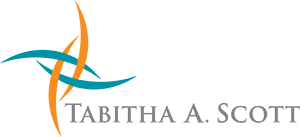Companies like Amazon, that successfully leap from one “S-Curve” to the next, thrive while those relying on their current business models risk obsolescence (remember Blockbuster?!) The pace of change has accelerated more quickly than our ability to adapt. The amount of technological change that happened in the year 2000 is replicated every 30 seconds today.
As companies drive 100 mph on the information highway, traditional planning and response times are no longer enough. Instead of long-term, linear planning, today’s leaders must be nimble enough to respond as chaos occurs (unexpected social media disasters, the pandemic, logistics disruptions…)
Being agile means staying close to the customer, using small teams that have decision making authority, and ensuring decision-making teams have enough variation. With the complexity of quick decision making comes the need for diversity, and companies need to go beyond gender, race, and age. Cognitive thinking and technological integration are equally powerful forms of diversity. Each team member will have unique strengths and according to countless studies, teams with diverse thinking are more innovative and productive. A blend of diversity increases the ability to reach revenue targets by 46%.
While diversity brings the right mix of employees to the table, inclusion makes sure each adds value. Inclusion is the exchange that takes place between people that sit in different seats along the growth curve. Innovators learn from optimizers to reduce risk. Execution-oriented managers get ideas from early adopters. Efficiency-minded leaders can scale and standardize new ideas.
What does all this mean for your business? One of our Fortune 200 clients leveraged the AEM-Cube, a tool that maps where leaders, teams, and organizations sit along the S-Curve (growth cycle). The company realized its Southern Region leaders were predominately at the top of the curve—they were great at optimizing efficiency and identifying risks. Its Northern Region, however, consisted mostly of those in the early part of the growth cycle—they were energized by new ideas and change.
During our work together, the company undertook a number of documented ideation processes. We used the AEM-Cube tool to conduct blind studies wherein the first rapid innovation exercises were done in like-type groups (early adopters were together, risk-averse optimizers together etc.) We then arranged teams in a manner that included diverse thinking types, including representation from all parts of the S-Curve. Innovation rose between 19%-39% in each case when teams included different thinking styles.
It’s a simple process to map your leaders, executive teams, and organizations on the S-Curve. It’s a quick way to visualize whether you’re ready to leap onto the next curve, like Amazon, or plunge from profitability, like Blockbuster.
Hear more about innovation and the AEM-Cube in this Video with Human Insights, read about cognitive diversity in this Harvard Business Review article, or contact me for help getting started.
